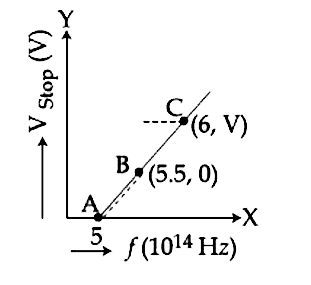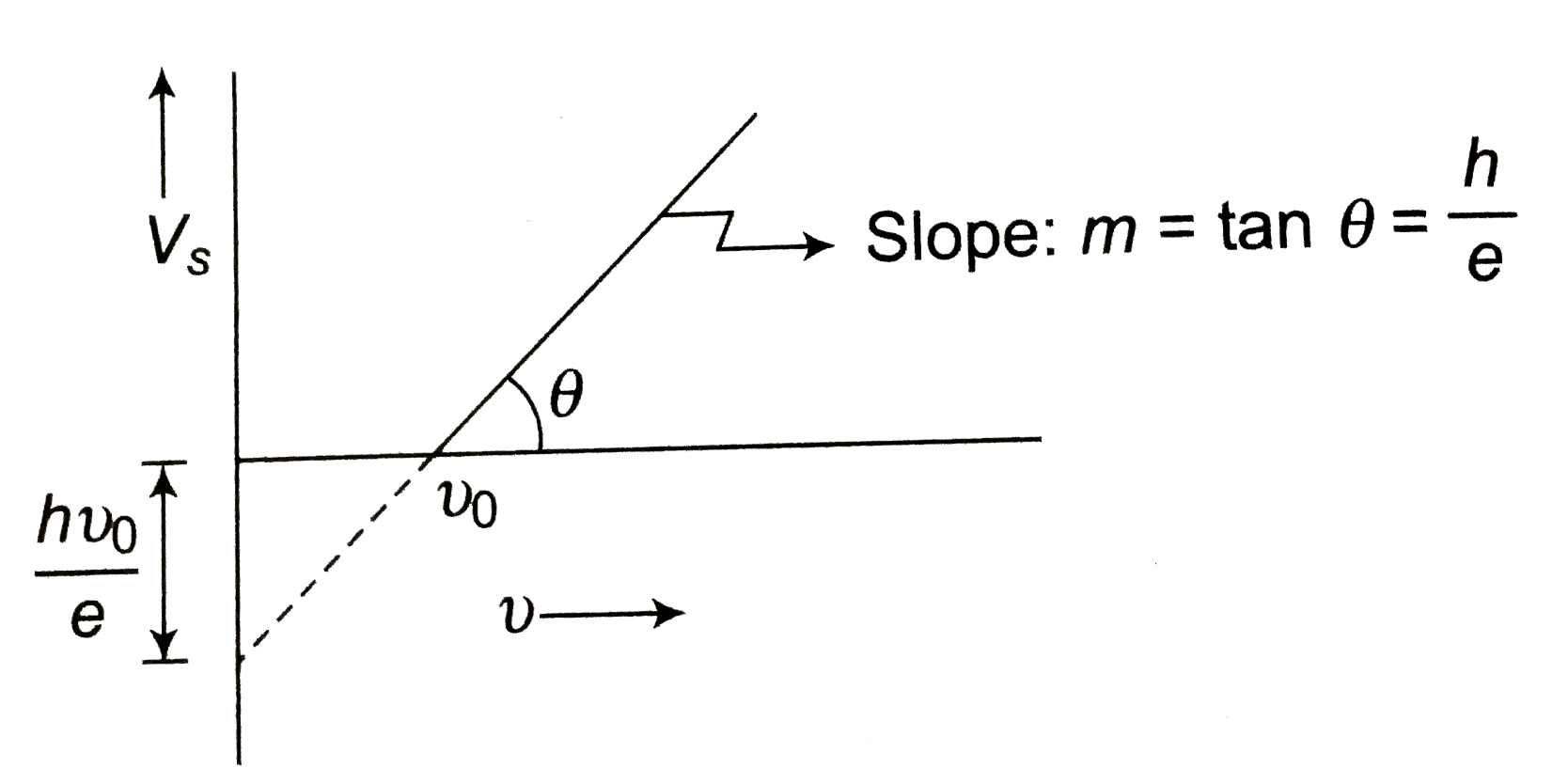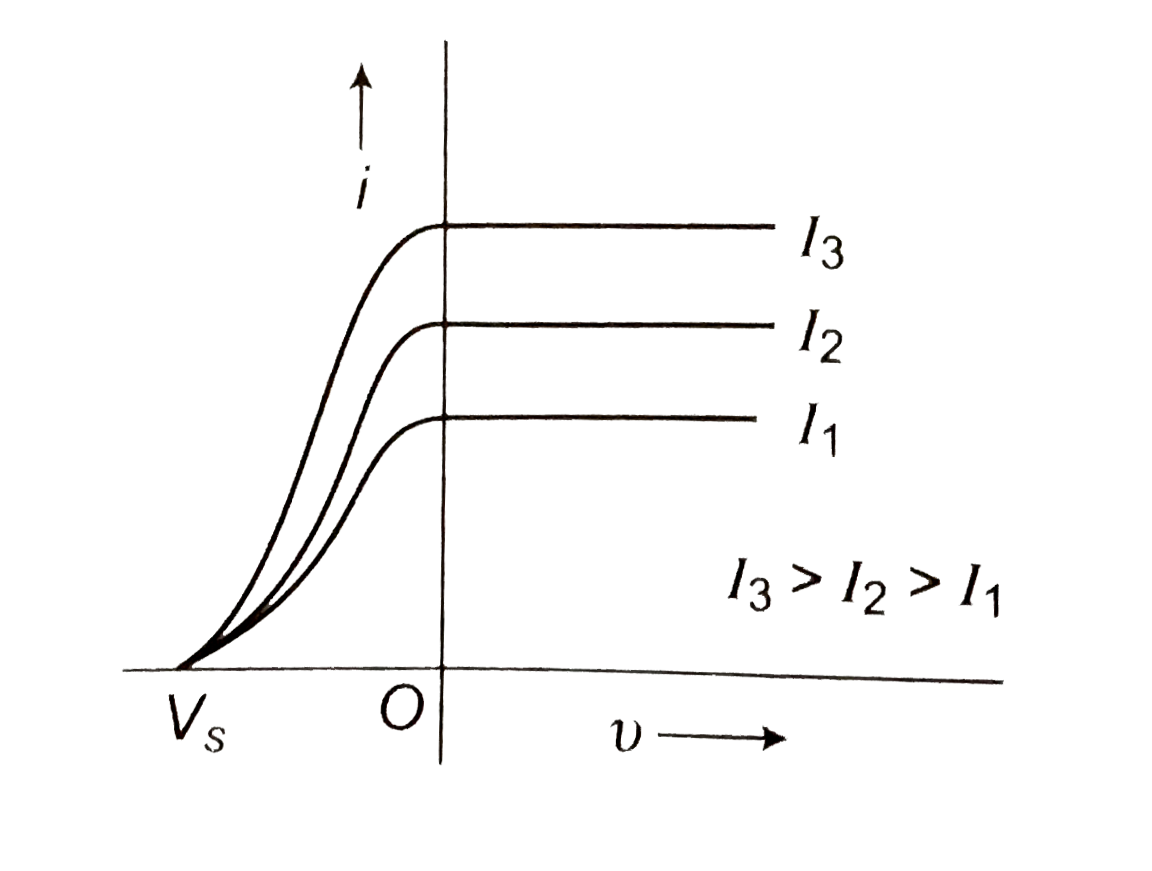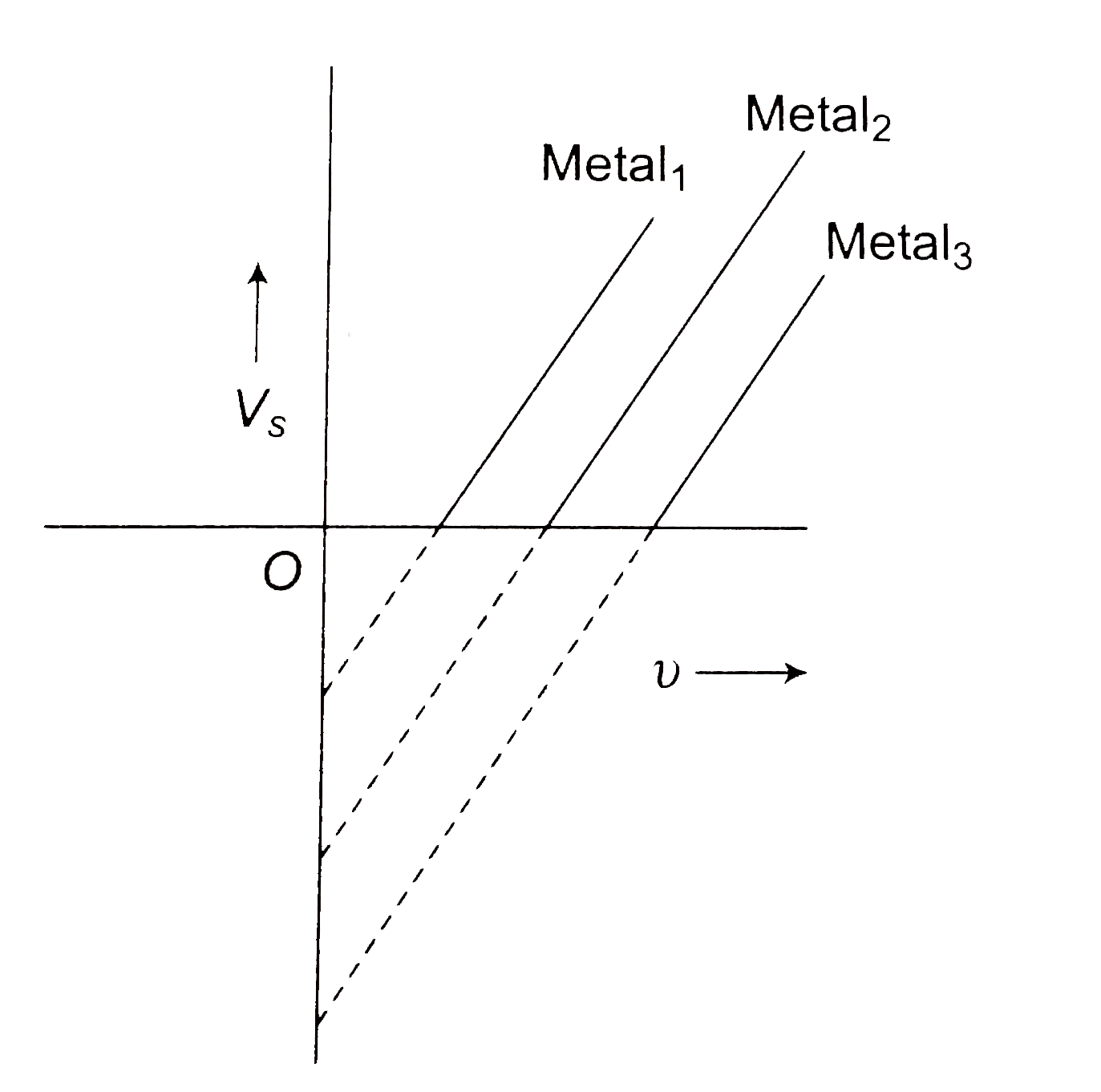Photo Electric Effect
Step by step video & image solution for Photo Electric Effect by Physics experts to help you in doubts & scoring excellent marks in Class 12 exams.
Updated on:21/07/2023Similar Questions
Given figure shows few data points in a photo electric effect experiment for a certain metal. The minimum energy for ejection of electron from its surface is ejection of electron from its surface is : (Plancks constant h = 6.62×10−34Js)

View SolutionThe photoelectric threshold of the photo electric effect of a certain metal is 2750A∘. Find
(i) The work function of emission of an electron from this metal,
(ii) Maximum kinetic energy of these electrons.
(iii) The maximum velocity of the electrons ejected from the metal by light with a wavelength 1800A∘.
View Solution
Knowledge Check
Electrons ejected from the surface of a metal, when light of certain frequency is incident on it, are stopped fully by a retarding potential of 3 volts. Photo electric effect in this metallic surface begains at a frequency 6×1014s−1. The frequency of the incident light in s−1 is [h=6x10−34J−sec, charge on the electron =1.6×10−19C]
A7.5×1013B13.5×1013C14×1014D7.5×1015In an experiment on photo- electric effect, stopping potential is 1.0 V when light of wavelenght 6520 Å is incident on the emitting surface. The stopping potential is 2.9 V for light of wavelenght 3260 Å. The function of the metal is
A0.9 eVB1.9 eVC5.8 eVDCannot be deduced from the given dataYellow light of 557 nm wavelength is incident on a cesium surface. It is found that no photo electrons flow in the circuit when the cathode-anode voltage drops below 0.25V. Then the threshold wavelength for photo electric effect from cesium is
A577 nmB653 nmC734 nmD191 nm
In a photo electric effects set-up, a point source of light of poewer 3.2×10−3 W emits mono energetic photons of energy 5.0 Ev. The source is located at a distance of 0.8m from the centre of a stationary metallic sphere of work function 3.0 Ev & of radius 8.0×106m. The efficiency of photo electric emission is one of every 106 incident photons. Assume that the sphere is isolated and initially neutral, and that photo electrons are instantly swept awy after emission.
(a) Calculate the number of photo electrons emitted.per second.
(b) Find the ratio of the wavelength of incident light to the de-Broglie wave length of the fastest photo electrons emitted. ltbr> (c) It is observed that the photo electron emission stops ata certain time tafter the light source is switched on. Why ?
(d) Evaluate the time t.
View SolutionAn orbiting satellite can become charged by the photo- electric effect when sunlight ejects electrons from its outer surface. Satellites must be designed to minimize such charging because it can ruin the sensitive microelectronics. Suppose a satellite is coated with platinum, a metal with a very large work function (Φ=5.32eV). Find the longest wavelength of incident sunlight that can eject an electron from the platinum.
View SolutionIn an experiment on the photo-electric effect Singly ionized helium is excited electronically to different energy levels. The light emitted by ionised helium is incident on photo-electric plate in a photocell. When helium is excited to fourth energy level, then the observed stopping potential of the photocell is found to be five times the stopping potential measured when the photoelectrons are produced by using light emitted by hydrogen atom, excited to the third energy level. Determine the work function of the material of the photo-electric plate.
View SolutionIn photo electric effect, if the energy required to over come the attractive forces on the electron (work function) of Li, Na and Rb are 2.41eV,2.3eV and 2.09eV respectively, the work function of ''K'' could approximately by in eV
View SolutionWhich of the following is correct regarding Einstein photo-electric effect equation?
(i) The equation is hv=hv0+Kmax=hv0+eVs
(ii) The variation of Vs with v is

(iii) The variation of photo-current versus applied potential

(iv)

View Solution
